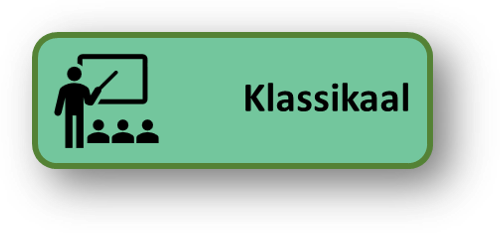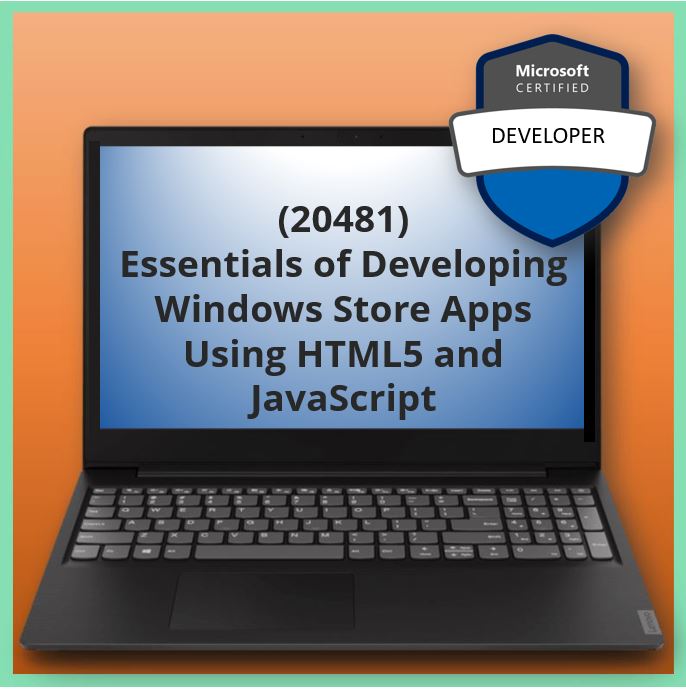Aangeboden leervormen


Essentials of Developing Windows Store Apps Using HTML5 and JavaScript (20481)
Course Description
In this course students will learn essential programming skills and techniques that are required to develop Windows Store apps. This includes a combination of both design and development skills, as well as ensuring that students are comfortable using and making the most of the Visual Studio and Expression Blend tools.
At Course Completion
After completing this course, students will be able to:
• Describe review the Windows 8 platform and features, and explore the basics of a Windows app interface.
• Create the User Interface layout and structure.
• Apply the MVVM pattern to application design.
• Implement the AppBar and layout controls.
• Use templates to create the UI.
• Use data binding to present data in the UI.
• Handle files and streams.
• Design and implement Process Lifetime Management (PLM).
• Handle navigation scenarios in a Windows Store app.
• Implement Semantic Zoom.
• Design and implement contracts such as Search, Share and Settings.
• Implement tiles and toast notifications in a Windows Store app.
• Respond to mouse, keyboard and touch events, including gestures.
• Deploy a Windows Store app to the Windows Store or an enterprise store.

Voor wie
Programma
Module 1: Overview of the Windows 8 Platform and Windows Store Apps
This module describes the Windows 8 platform and features, and explores the basics of a Windows Store app interface.
Lessons
· Introduction to the Windows 8 Platform
· Windows 8 User Interface Principles
· WinRT and Language Projections
Lab : Overview of the Windows 8 Platform and Windows Store Apps
· Explore the Windows 8 Platform
· Explore a Windows Store App
· Create an App User Interface Using Visual Studio 2012 and Blend Development Tools
After completing this module, students will be able to:
· Describe the Windows 8 platform, architecture, and features.
· Describe the basics of the Windows 8 UI and the Windows Store app experience.
· Describe the new API model, how it supports building Windows Store apps, and how it enables multiple language-specific projections.
Module 2: Single-Page Applications and the MVVM Design Pattern
This module describes the principles used for building single-page apps and how to apply the MVVM design pattern using JavaScript
Lessons
· Single-Page Apps
· The MVVM Design Pattern
After completing this module, students will be able to:
· Describe the concepts used when building a single-page smart client app.
· Describe how to implement the MVVM design pattern using JavaScript.
Module 3: Using WinJS
This module explains how to use WinJS to build Windows Store apps.
Lessons
· The WinJS Library
· WinJS APIs
Lab : Using WinJS
· Define the Data Namespace and Objects
· Use promises to load data asynchronously
After completing this module, students will be able to:
· Describe the WinJS library.
· Describe important WinJS APIs.
Module 4: Implementing Layout using Windows 8 Built-In Controls
This module explains how to implement the AppBar and layout controls.
Lessons
· Windows 8 Layout Controls
· Implementing Templates
· The AppBar Control
· Snap and Scale
Lab : Implementing Layout using Windows 8 Built-In Controls
· Implement an AppBar Control
· Create Adaptive Views
· Create a Template Control
After completing this module, students will be able to:
· Describe out-of-the-box layout controls available for Windows Store apps.
· Implement a control template for use with built-in controls.
· Describe the AppBar and its functionality.
· describe snapped and scaled views.
Module 5: Presenting Data
This module explains how to use data binding to present data in the User Interface.
Lessons
· Working with Data Presentation Controls
· The ListView Control
Lab : Presenting Data
· Create the Data
· Implement the ListView Control
After completing this module, students will be able to:
· Describe data presentation support for various controls and the differences between the controls.
· Describe data presentation controls (ListView).
Module 6: Handling Files in Windows Store Apps
This module explains how to handle files and streams in Windows Store Apps.
Lessons
· Handling Files and Streams in Windows Store apps
· Working with File User Interface Components
Lab : Handling Files in Windows Store Apps
· Read Data from the Notes File
· Write Data to the Notes File
After completing this module, students will be able to:
· Enumerate Windows.Storage namespace objects and their capabilities.
· Describe the best practices for how to use the file system objects and various streams.
· Describe the asynchronous nature of the file system and streams.
· Describe the file and contact pickers.
Module 7: Windows Store App Process Lifetime Management
This module explains how to respond to application lifecycle events using Process Lifetime Management (PLM) and the PLM extensibility points provided by the Visual Studio 2012 templates.
Lessons
· Process Lifetime Management
· Launching Windows Store Apps
· Implementing State Management Strategy
Lab : Windows Store App Process Lifetime Management
· Explore the Different PLM States
· Implement State Management
After completing this module, students will be able to:
· Describe the Windows Store apps PLM.
· Describe the best practices for implementing Windows Store app launch/activation.
· Describe state management concepts in Windows Store apps.
Module 8: Designing and Implementing Navigation in a Windows Store App
This module explains how to handle navigation scenarios in a Windows Store app and how to implement Semantic Zoom.
Lessons
· Handling Navigation in Windows Store apps
· Semantic Zoom
Lab : Designing and Implementing Navigation in a Windows Store App
· Add Navigation to the App
· Implement Semantic Zoom
After completing this module, students will be able to:
· Describe navigation principles in Windows Store apps.
· Describe Semantic Zoom.
Module 9: Implementing Windows 8 Contracts
This module explains how to design and implement Windows 8 contracts such as Search, Share and Settings.
Lessons
· Designing for Charms and Contracts
· The Search Contract
· The Share Contract
· Managing App Settings and Preferences
Lab : Implementing Windows 8 Contracts
· Implement the Search Contract
· Implement the Share Contract
· Adding a New Setting to the Settings Pane
After completing this module, students will be able to:
· Describe charms and the contracts approach.
· Describe and implement the Search charm and app extensibility options through the Search contract.
· Describe and implement the Share charm and app extensibility options through the Share contract.
Module 10: Implementing Tiles and User Notifications
This module explains how to implement tiles and toast notifications in a Windows Store App.
Lessons
· Implementing Tiles, Live Tiles, Secondary Tiles, and Badge Notifications
· Implementing Toast Notifications
Lab : Implementing Tiles and User Notifications
· Enable Live Tile Functionality on the Main Tile
· Add Secondary Tile Functionality
After completing this module, students will be able to:
· Describe live tiles, tile types and associated templates.
· Describe badge notifications.
· Describe toast notifications.
Module 11: Designing and Implementing a Data Access Strategy
This module explains how to implement various data access scenarios for Windows Store apps.
Lessons
· Evaluating Data Access Strategies
· Working with Remote Data
After completing this module, students will be able to:
· Describe various data access strategies, their advantages and disadvantages, and when it is appropriate to use them.
· Describe common use cases that occur while working with remote data.
Module 12: Responding to Mouse, Keyboard and Touch
This module explains how to respond to mouse, keyboard and touch events, including gestures.
Lessons
· Working with Mouse Events
· Working with Gesture Events
Lab : Responding to Mouse, Keyboard and Touch
· Implement Mouse Events
· Implement Gesture Events
After completing this module, students will be able to:
· Describe and implement mouse pointer and single-touch scenarios.
· Describe and implement gestures support and multi-touch scenarios.
Module 13: Planning for Windows Store App Deployment
This module explains how to deploy Windows Store apps to the Windows Store or an enterprise store.
Lessons
· The Windows Store App Manifest
· Windows Store App Certification
· Enterprise App Deployment
After completing this module, students will be able to:
· Describe the app manifest in depth.
· Describe the Windows Store app certification process and publishing requirements.
Voorkennis
Before attending this course, students must have:
· 1 or more years of experience creating applications.
· 1 – 3 months experience creating Windows client applications.
· 1 – 3 months experience using Visual Studio 2010 or 2012.
· Material taught in MTS 20480: Programming in HTML5 with JavaScript and CSS3, or equivalent.
Examen
70-481 Essentials of Developing Windows Store Apps Using HTML5 and JavaScript
Duur training
Klassikaal: 4 dagen
Open Leercentrum: 5 dagen







